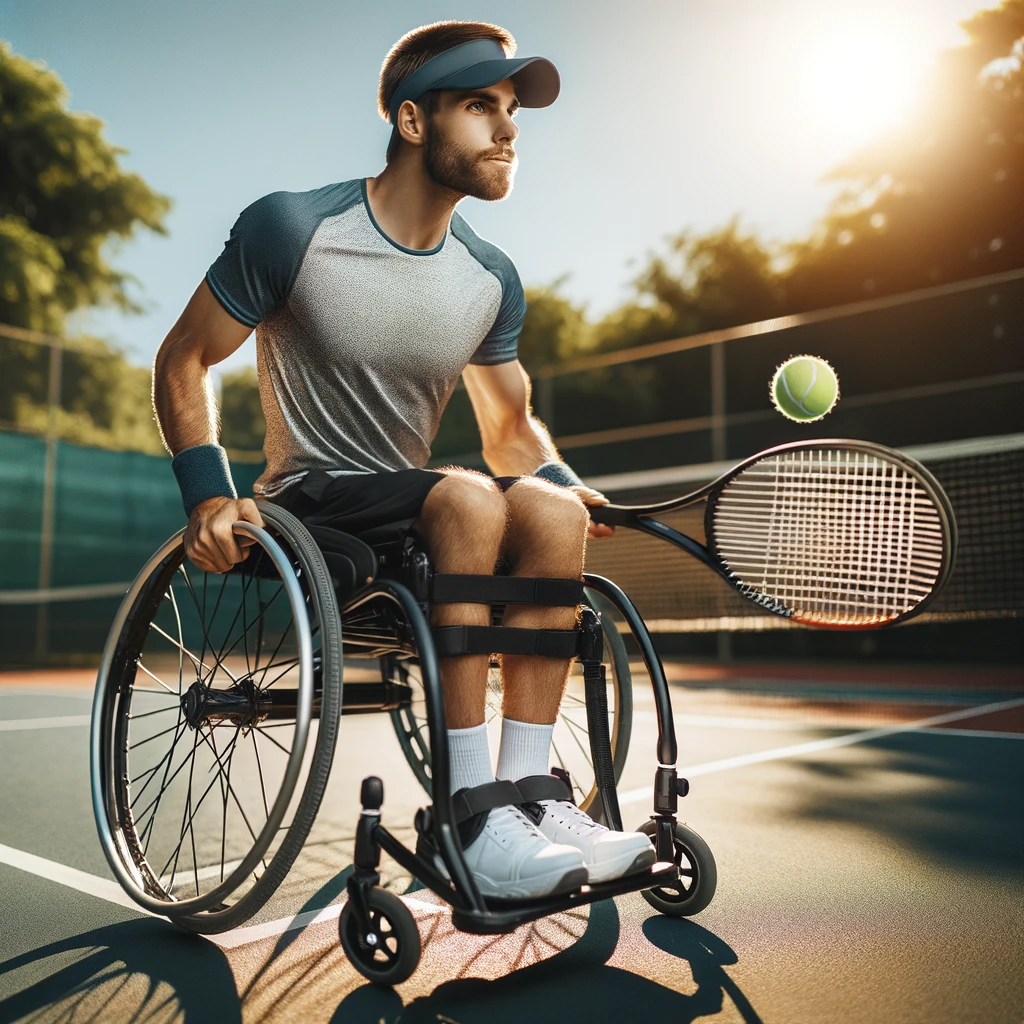Step onto the clay court and unlock the secrets to sliding success. Like a graceful dancer gliding across the stage, mastering the art of sliding can elevate your game to new heights.
In this article, we will explore the importance of proper footwork, delve into the nuances of the sliding technique, and unveil strategies for better court coverage.
Whether you seek defensive prowess or offensive power, these clay court tactics will equip you with the skills needed to dominate the game.
Key Takeaways
- Proper footwork and sliding technique are crucial for efficient movement and balance on clay surfaces.
- Sliding helps maintain balance and reach balls with minimal strain on joints, minimizing the risk of losing balance and preventing injury.
- Sliding allows for quick changes in direction and recovery to maintain momentum, neutralizing opponents’ strong shots and reaching wide shots effectively.
- Sliding enhances offensive power by generating more speed and momentum, applying pressure through aggressive shot selection and maintaining offensive dominance in rallies.
Importance of Proper Footwork
Proper footwork is crucial for a player’s success on clay courts. Clay surfaces are known for their slow pace and high bounce, which require players to have good footwork to effectively move around the court and maintain balance. Correcting footwork flaws is essential to ensure efficient movement and minimize errors during play.
One of the key elements of effective footwork on clay courts is agility. Players must possess the ability to quickly change direction and react to their opponent’s shots. Agility allows players to reach wide balls and recover to the center of the court, enabling them to maintain good court coverage and defensive positioning.
To improve footwork on clay, players should focus on their foot positioning and weight transfer. It is important to keep the feet wide apart to maintain stability and generate power in shots. Additionally, players should practice moving in a low, crouched position to improve balance and enable quick changes in direction.
Mastering the sliding technique is an integral part of effective footwork on clay courts. Sliding allows players to maintain balance and reach balls while minimizing the strain on their joints. In the next section, we will delve into the techniques and training required to master the sliding technique on clay courts.
Mastering the Sliding Technique
The mastery of the sliding technique is essential for achieving success on clay courts, enhancing players’ agility and enabling them to maintain balance while reaching for balls.
Sliding techniques for fast court transitions are crucial for players to quickly change direction and cover more ground on the clay surface. One effective sliding technique is the open stance slide, where players push off with their outside leg and slide their inside leg behind them. This technique allows for a quick transfer of weight and minimizes the risk of losing balance.
Another useful technique is the diagonal slide, where players slide at a 45-degree angle, using both legs to propel themselves forward. This technique is particularly effective for reaching wide shots.
To improve their sliding technique, players can incorporate sliding drills into their training regimen. One such drill is the lateral slide drill, where players practice sliding sideways across the court, focusing on maintaining balance and control.
Another drill is the split-step slide drill, where players perform a split-step before sliding into the desired direction. This drill helps improve agility and quick reactions on the court.
Additionally, practicing sliding on different surfaces, such as synthetic clay or grass, can help players adapt their technique to various conditions.
Mastering the sliding technique is essential for players looking to excel on clay courts. By incorporating sliding techniques for fast court transitions and engaging in sliding drills for improving agility and balance, players can enhance their overall performance and increase their chances of success on clay surfaces.
Strategies for Better Court Coverage
To maximize court coverage and optimize their sliding technique, players should employ strategic positioning and anticipate their opponent’s shots. Improving agility and quickness on clay courts is crucial for better court coverage. Players can enhance their agility by incorporating specific drills and exercises into their training routine. These exercises can focus on improving footwork, lateral movements, and quick changes in direction. Additionally, players should work on their speed and explosiveness through interval training and plyometric exercises.
Incorporating sliding into their strategy can also help players neutralize opponents’ strong shots. By mastering the art of sliding, players can effectively reach wide shots and maintain balance during powerful returns. Sliding allows players to quickly change direction and recover in time for the next shot. Moreover, it helps players maintain their momentum and prevent injury on the clay surface.
Strategic court positioning is another vital aspect of better court coverage. Players should position themselves closer to the center of the court to have better access to all areas. This allows them to react quickly to their opponent’s shots and cover the court more efficiently. Anticipating the opponent’s shots is equally essential. By studying their opponent’s patterns and tendencies, players can anticipate where the ball will go and adjust their positioning accordingly.
Utilizing Sliding for Defensive Plays
When incorporating sliding into their defensive strategy, players can effectively counter their opponents’ aggressive shots and maintain their balance on the clay court. Sliding for agility allows players to quickly change direction and reach shots that are outside their normal range. By sliding into a defensive position, players can cover more ground and retrieve shots that would be otherwise unreachable. This technique requires players to have excellent footwork and body control to execute the slide smoothly and maintain their balance.
Sliding for quick recovery is another important aspect of defensive sliding on clay courts. After retrieving a difficult shot, players can quickly recover and position themselves for the next shot by using controlled slides. This allows them to regain their balance and maintain their defensive position on the court.
To better understand the benefits of sliding for defensive plays, let’s take a look at the table below:
| Benefits of Sliding for Defensive Plays |
|:—:|:—:|:—:|
| Improved agility | Enhanced court coverage | Quick recovery |
Enhancing Offensive Power With Sliding Tactics
Players can leverage the technique of sliding to enhance their offensive power on clay courts, allowing them to generate more speed and momentum for aggressive shots. Sliding for aggressive shot selection is a valuable skill that can give players an advantage in clay court rallies. By sliding into position, players can quickly reach wide balls and set themselves up for powerful shots. The ability to slide enables players to maintain balance and stability while executing aggressive shots, such as cross-court winners or deep penetrating groundstrokes.
When sliding, players can use their momentum to generate additional power in their shots. By sliding into the shot, players can transfer their body weight effectively and generate more force behind the ball. This added power can be particularly advantageous on clay courts, where the slower surface allows players more time to set up and execute their shots.
Furthermore, sliding can be used as a weapon in clay court rallies. By sliding into shots, players can take away time from their opponents and apply pressure through their aggressive shot selection. The speed and agility that sliding provides enables players to reach balls that would otherwise be out of reach, allowing them to maintain offensive dominance in rallies.
Frequently Asked Questions
What Are the Benefits of Proper Footwork on Clay Courts?
Proper footwork on clay courts offers numerous benefits, including improving balance and agility. By utilizing proper footwork, players can achieve faster recovery and make better shot selections, enhancing their overall performance on the court.
How Can I Improve My Sliding Technique on Clay Courts?
To improve your sliding technique on clay courts, it is essential to focus on specific sliding drills that enhance balance, coordination, and agility. Additionally, proper body positioning, such as a low center of gravity, will facilitate smoother and more effective slides.
What Strategies Can I Use to Cover the Court More Effectively on Clay?
To cover the court more effectively on clay, players can employ a range of strategies for court coverage and defensive sliding techniques. These tactics help enhance agility, enable quick recovery, and allow players to anticipate and respond to shots with precision.
How Can Sliding Be Used for Defensive Plays on Clay Courts?
Sliding techniques on clay courts can be employed for defensive plays, allowing players to quickly recover and launch counterattacks. These tactics enhance agility and enable effective coverage of the court, resulting in a competitive advantage.
What Are Some Ways to Enhance My Offensive Power Using Sliding Tactics on Clay?
Enhancing agility and utilizing angles are key strategies for enhancing offensive power using sliding tactics on clay courts. By incorporating these techniques, players can effectively position themselves and generate more power in their shots.
Conclusion
In conclusion, mastering the art of sliding on clay courts is crucial for success in tennis.
By focusing on proper footwork, mastering the sliding technique, and utilizing sliding for both defensive and offensive plays, players can greatly improve their court coverage and overall performance.
Just as a dancer effortlessly glides across a stage, a tennis player can glide across the clay court, showcasing their agility and finesse.








No Comment! Be the first one.